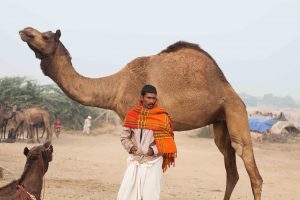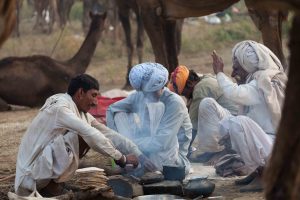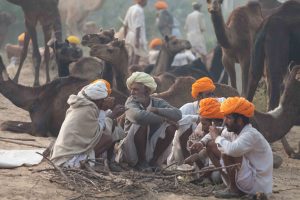Where Tradition and Commerce Converge under the Desert Moon
As the first full moon of November graces the horizon, the revered city of Pushkar, nestled along the fringes of the Thar desert, awakens to life with the grandeur of the Pushkar Mela, often referred to as the Camel Fair, and for excellent reasons. This cultural extravaganza unfolds over eight days, where the arid sands come alive with the lively negotiations of merchants hailing not only from the nearby desert but also from far-flung corners.
At the heart of the Pushkar Mela lies a captivating blend of tradition and commerce. Thousands of camels, the lifeblood of the desert communities, take center stage. This extraordinary event transforms the tranquil city into a bustling marketplace, as merchants set up their camps and engage in fervent negotiations, seeking the finest camels that will serve as both prized possessions and vital trade commodities.
In the midst of this dynamic exchange, the Pushkar Mela thrives as an emblem of Rajasthan’s rich cultural heritage. It’s a time when the city’s labyrinthine alleys resonate with the melodies of folk songs and the rhythmic beats of traditional dances. The air is scented with the aromas of delectable street food, a sensory tapestry of flavors that beckons to all who gather there.
For both locals and visitors, the Pushkar Mela is more than just a fair; it’s a momentous occasion that transcends the mere trade of camels. It’s a kaleidoscope of colors, cultures, and traditions that paint a vivid portrait of life in the desert, and a reminder of the timeless rhythms that have sustained communities in this arid expanse for generations.
The Pushkar Mela stands as a vibrant testament to the intricate interplay of commerce, culture, and tradition, as well as a spectacle of life and vibrancy in the heart of the Thar desert.
Pushkar, Rajasthan, India.
© Nicolás Preci
















